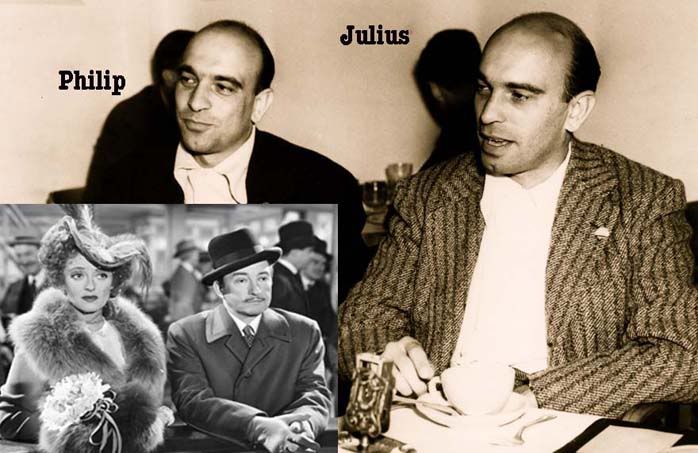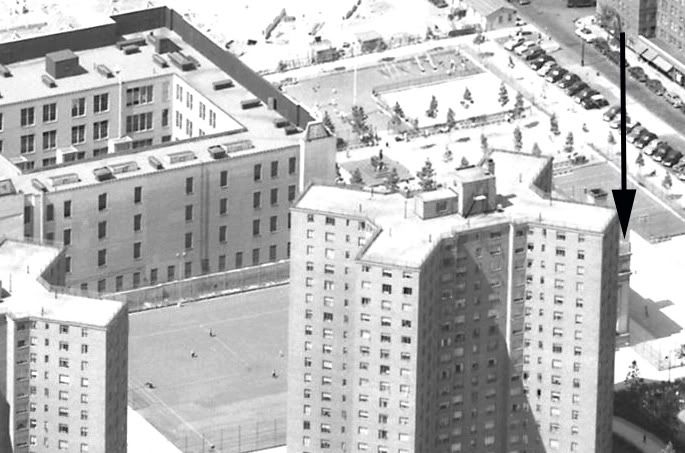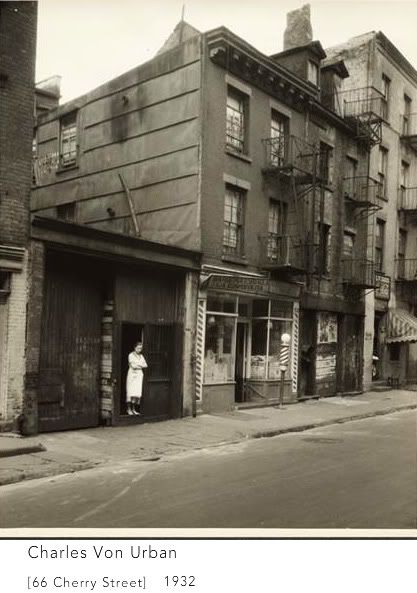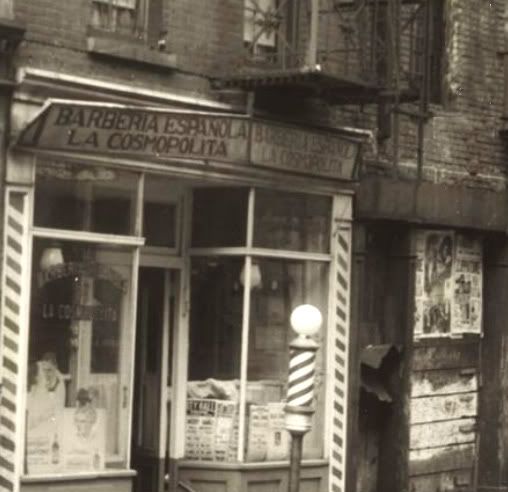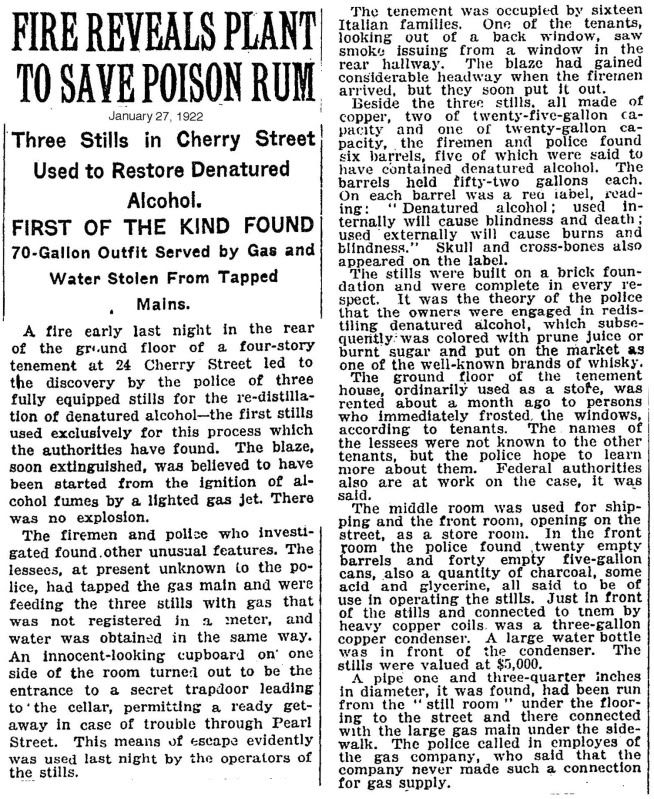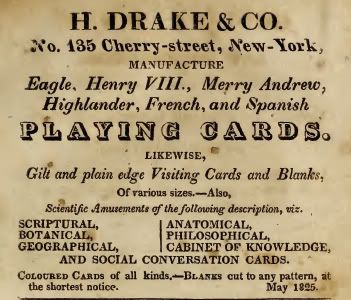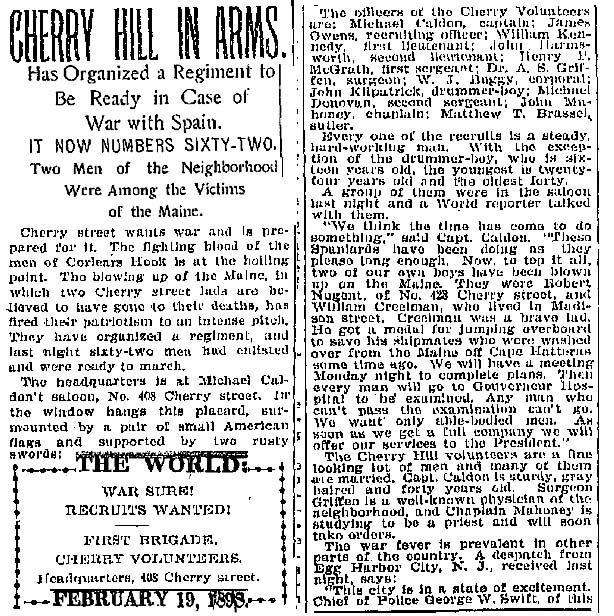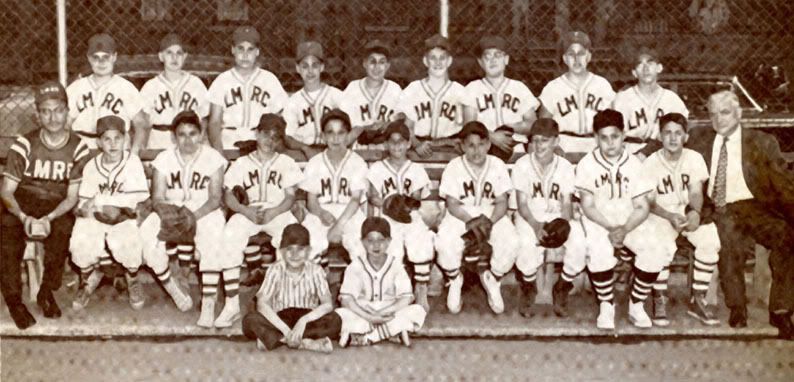Showing posts with label cherry street. Show all posts
Showing posts with label cherry street. Show all posts
Saturday, November 12, 2011
A Hidden 4th Ward Reference In Mr. Skeffington
The great screenwriters, Julius and Philip Epstein, lived at Market and Cherry.
Mr. Skeffington is a 1944 American drama film directed by Vincent Sherman, based on the novel of the same name by Elizabeth von Arnim. The film stars Bette Davis as a beautiful woman whose many suitors, and self-love, distract her from returning the affections of her husband, Job Skeffington. It also makes a point about Skeffington's status as a Jew in 1914 high society and, later, in relation to Nazi Germany.
Dialogue from the movie with time stamps
:35:00
Job, I was born right across
the river there, near Grant's Tomb.
:35:05
Of course, the tomb
hadn't quite been built.
:35:07
My governess used to
take me there every day.
:35:10
That's where she met her policeman.
:35:12
Job, where were you born?
:35:14
Right here in New York.
The corner of Market and Cherry Street.
:35:18
Market and Cherry? Where's that?
:35:21
Foot of the East River. It's about 10 miles,
I should say, from the nearest governess.
:35:27
Job, do you realize I've known you
only two months?
:35:30
And that I practically know
nothing about you at all.
:35:34
Were you poor?
:35:35
You have no idea how poor.
:35:37
You weren't actually hungry?
:35:40
My father sold chocolate bars
with almond nuts on a pushcart.
:35:43
When he had a good day, we ate meat.
:35:46
When he had a bad day,
we ate chocolate bars with almond nuts.
:35:49
The bad days had a slight edge.
:35:51
You remember a lot about
when you were a little boy, don't you?
:35:55
Especially the lack of plumbing.
:35:59
Skeffington, that's a strange name
for Market and Cherry.
:36:03
You mean, is that my real name?
:36:05
No. The immigration official on
Ellis Island wasn't a good speller...
:36:09
...and "Skeffington" was the closest
he could get to "Skevinzskaza."
:36:13
Well, then, how did you
become so successful?
:36:18
I don't wanna go on
with the story of my life.
:36:20
It's routine, rags to riches.
Of course, I sold newspapers.
:36:24
I was a messenger during the day
and went to school at night.
:36:27
You can fill in the rest.
:36:29
There's one difference.
:36:31
You didn't marry the boss's daughter.
:36:33
No.
:36:35
But I married the woman
everybody else wanted to.
:36:38
That makes up for it.
:36:51
Job, find out what's happening.
:36:57
Attendant?
:36:58
- Yes?
- What's going on?
Tuesday, July 26, 2011
Sunday, April 3, 2011
166 Cherry Street, 1932
a close up of the above. These buildings would soon be torn down with the construction of Knickerbocker Village, They are just to the west of Market Street.
Three Triangle Shirtwaist fire victims and one survivor lived near this building in 1911. Images from the mcny collection
Three Triangle Shirtwaist fire victims and one survivor lived near this building in 1911. Images from the mcny collection
Sunday, January 23, 2011
In the 1820's, At 135 Cherry Street
This address is around where Cherry meets Market Street.
from wikipedia
from wikipedia
There are theories about whom the court cards represent. For example, the Queen of Hearts is believed by some to be a representation of Elizabeth of York—the Queen consort of King Henry VII of England, or it is sometimes believed to be a representation of Anne Boleyn, the second wife of Henry VIII. The United States Playing Card Company suggests that, in the past, the King of Hearts was Charlemagne, the King of Diamonds was Julius Caesar, the King of Clubs was Alexander the Great, and the King of Spades was the Biblical King David (see King (playing card)). However, the Kings, Queens, and Jacks of standard Anglo-American cards today do not represent anyone in particular. They stem from designs produced in Rouen before 1516, and, by 1540–67, these Rouen designs show well executed pictures in the court cards with the typical court costumes of the time. In these early cards, the Jack of Spades, Jack of Hearts, and King of Diamonds are shown from the rear, with their heads turned back over the shoulder so that they are seen in profile; however, the Rouen cards were so badly copied in England that the current designs are gross distortions of the originals.
Saturday, January 22, 2011
George Rutgers' House: 329 Cherry Street Historic Home
329-cherry-house
Currently this is where the former PS 137, now known as PS 184, is situated.
Currently this is where the former PS 137, now known as PS 184, is situated.
Friday, January 21, 2011
Cherry Hill Casualities In The Sinking Of The Maine
The headquarters for volunteers to sign up was at Michael Caldon's saloon at 408 Cherry Street. This was near the old Gouverneur Hospital. According to the article the two sailors who lost their lives were Robert Nugent of 428 Cherry Street and William Creelman of Madison Street. The problem is that Creelman didn't die. Also the 408 Cherry Street address is not really considered Cherry Hill, but rather in the Corlear's Hook, 7th Ward, area of the LES
About William Creelman:
About William Creelman:
William James Creelman (August 3, 1874 – March 24, 1928) was a United States Navy sailor and a recipient of the United States military's highest decoration, the Medal of Honor. He was awarded the medal for jumping overboard during an 1897 winter storm in an unsuccessful attempt to rescue a shipmate from drowning. Creelman went on to become a commissioned officer before leaving the Navy.
Born on August 3, 1874, in Brooklyn, New York, Creelman joined the Navy from that state. By February 1897, he was serving as a landsman on the USS Maine.
On the morning of February 4, Maine set out from Hampton Roads, Virginia, for Charleston, South Carolina, as part of the six-ship "White Squadron". Later that evening a strong storm developed which lasted for several days. Early on February 6, a large wave broke over the deck of the ship and washed away two sailors, Apprentice Leonard C. Kogel and Gunner's Mate Charles Hassel. After a lifebuoy was thrown to Hassel, Creelman jumped overboard into the rough seas and swam towards Kogel, but was unable to reach the apprentice before he sank beneath the waves. He than swam to Hassel and the two men clung to the lifebuoy as they were swept out of sight of Maine. Meanwhile, the ship's sailors put out a lifeboat which was quickly disabled after its steering oar was broken by the heavy waves. As Maine maneuvered to pick up the lifeboat and its crew, two more men were washed overboard and drowned. It was three and a half hours before the seas were calm enough for Maine to locate and take aboard Creelman and Hassel, still holding onto the lifebuoy and near exhaustion.For this action, Creelman was awarded the Medal of Honor.
Creelman's official Medal of Honor citation reads:
Attached to the U.S.S. Maine, February 1897. Distinguishing himself, Creelman showed extraordinary heroism in the line of his profession during an attempt to save life at sea.
Creelman reached the commissioned officer rank of lieutenant before leaving the Navy. He died on March 24, 1928, at age 53 and was buried at Calvary Cemetery in New York City.
Sunday, January 2, 2011
John Beekman House
Beekman Drawings
Hamilton Square is located in the Beekman Hill neighborhood of Manhattan, named after the influential Beekman family from colonial times. One of the original homes of John Beekman was located in the fourth ward at 29 Cherry Street.
Hamilton Square is located in the Beekman Hill neighborhood of Manhattan, named after the influential Beekman family from colonial times. One of the original homes of John Beekman was located in the fourth ward at 29 Cherry Street.
Beekman Place is a small street located on the east side of Manhattan, New York City. The street runs from north to south for approximately two blocks and is situated between the eastern end of 51st and 49th streets. Beekman Place is also used to refer to the residential neighborhood that surrounds the street itself. It is named after the Beekman family, an influential family in the development of the city. The neighborhood was the site of the Beekman family mansion, Mount Pleasant, which was built by James Beekman in 1765. James Beekman was a descendant of Willem Beeckman for whom Beekman Street was named.
The British made their headquarters in the mansion for a time during the Revolutionary War and Nathan Hale was tried as a spy in the mansion's greenhouse and hanged in a nearby orchard. George Washington visited the house many times during his presidency. The Beekman family lived at Mount Pleasant until a cholera epidemic forced them to move in 1854. The home survived until 1874 when it was torn down.
With the surge of immigration from Europe in the late 19th and early 20th century, the Lower East Side's slums expanded north. The Beekman Place area's well-off residents gave way to impoverished workers employed in the coalyards that defaced much of the East River shore. The neighborhood's rehabilitation began in the 1920's, facilitated primarily by Anne Morgan of the Morgan banking family, who lived slightly farther north on Sutton Place.
Labels:
beekman,
cherry street,
hamilton square,
Ward 4
Tuesday, April 13, 2010
The Seamen's Home On 190 Cherry Street
Seamen's Home
These buildings would be effected by the 1882 fire at the Hecker's Mill The home would be demolished to make way for the Manhattan Bridge in 1903.
These buildings would be effected by the 1882 fire at the Hecker's Mill The home would be demolished to make way for the Manhattan Bridge in 1903.
Subscribe to:
Posts (Atom)

